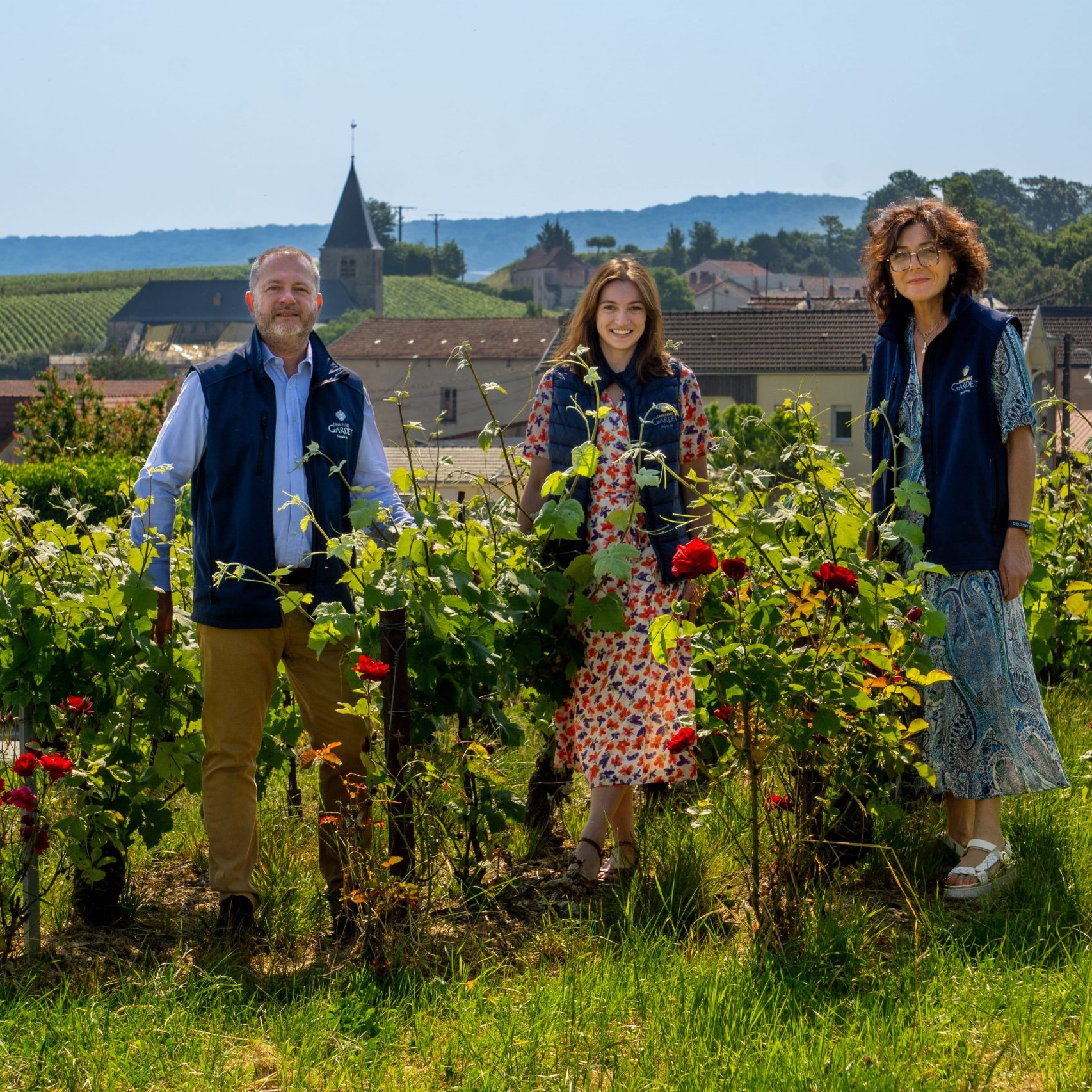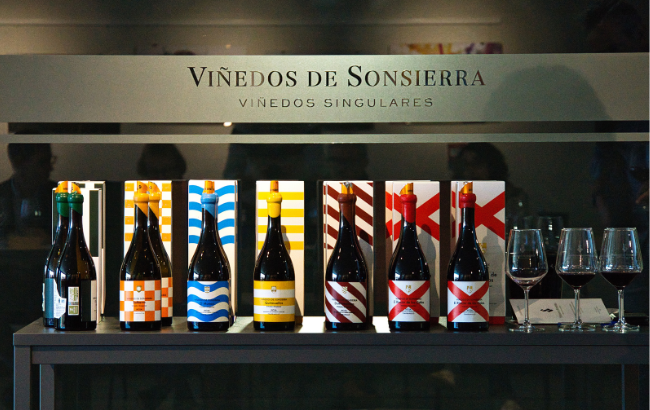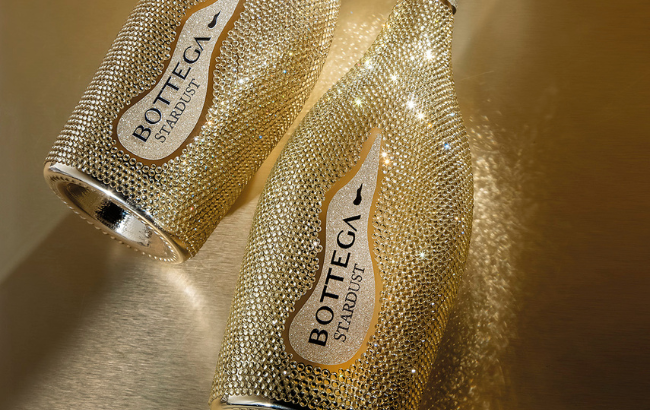In focus: How the challenging Bordeaux 2021 vintage is shaping up
By Colin HayWith the 2021 vintage proving extremely challenging across the whole of France, Colin Hay speaks to producers in Bordeaux to find out how the vintage is shaping up.
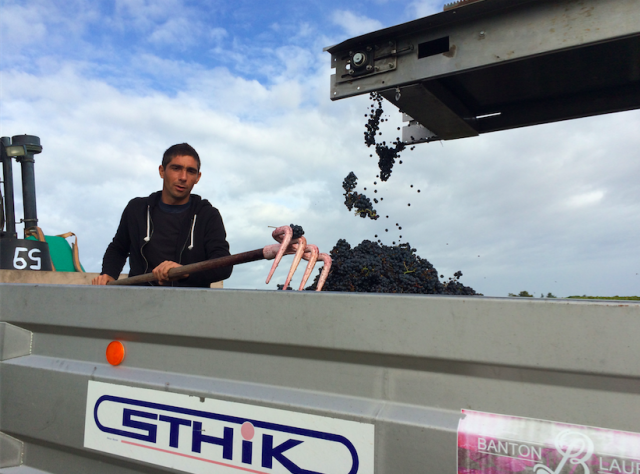
As we reported recently 2021 is proving an extremely challenge vintage in the vineyards of France, with the French Agriculture Ministry already estimating a potential harvest 25-30% lower than the average – around the level last produced in 1977.
While other regions have been even harder hit (notably in parts of Burgundy, Champagne, the Loire and the Rhone valleys), Bordeaux too is suffering. I spoke to a number leading producers, on both the right and left banks, to gauge their experience of the vintage to date and their hopes, anxieties and expectations as we enter the final month before the harvest.
Each was happy to be quoted ‘on the record’; each provided full, detailed and frank responses to all of my questions.
As such, and so as to retain as much of the precision and detail of their answers, I have chosen simply to provide verbatim extracts from their responses to my various questions. Where their replies were in French, the translation is my own. The interviews were conducted between the 13th and 24th of August.

With just over a month or so to go before the potential harvest, how do your vineyards look today? What have been the principal challenges of the vintage to date?
Francois Despagne, Chateau Grand-Corbin Despagne, St Emilion and President of the Association of St Emilion Grands Crus Classés, St Emilion (hereafter, FD): The growing year was very difficult with a combination of risk factors: spring frost, uneven flowering and the presence of mildew. The vineyard today is doing well. One thing is certain, however: yields will be rather weak because of these various factors and, above all, because of the variable weather conditions at the time of the flowering.
This led to some coulure, with a loss of 10 to 30 per cent of the total potential production (depending on the plot). The most difficult challenge to control has undoubtedly been the mildew. Our vines were in perfect health until mid-June. Heavy and persistent rainfall was difficult to manage during the last two weeks of June with the risk of mildew settling on the grapes. In organic culture we were on the alert during this period where we had to intervene almost every other day during one week.
Pierre Olivier Clouet, Technical Director, Chateau Cheval Blanc, St Emilion (hereafter, POC): The vintage has been very complicated, essentially because of the weather conditions – above all the threat of frost which was extremely severe in many vineyards this year, even if Cheval Blanc itself suffered no losses itself. Spring was particularly wet, bringing with it the severe threat of downy mildew, with notably strong mildew pressure on the grape clusters themselves. Frequent and heavy rain persisted.
Today (at the end of véraison), there is absolutely no hydric constraint or stress, the vines are copiously supplied with water. The result is large grapes with medium concentration and a moderate tannic structure. The principle challenges were clearly to protect the vines from the threat of mildew, to find the best weather windows in which to intervene and to do all that could be done to limit its propagation in the vineyard.
Romik Arconian, Chateau Canon-Chaigneau, Lalande de Pomerol (hereafter, RA): It’s pretty disastrous. Spring frost partially destroyed and weakened the vines, making them more susceptible to a rampant mildew, which has devastated the vineyard. The rains – and the timing of the rains – has meant that it’s not only been very invasive and very fast, but extremely difficult to treat. This is the worst ever year for mildew according to Louis Marin, our chef de culture, for over 40 years. There are a lot of dead and dried out little grapes. It looks almost like a grape war-zone in some parcels. There is also quite a bit of uneven ripening elsewhere, but some parcels have been much less impacted. We are at least 30%, and perhaps even 60%, down in terms of yield. We are now most likely looking at around 20-30 hl/ha. I suppose that’s still more than some.

Gonzague Lurton, Chateau Durfort-Vivens (hereafter, GL): We suffered frost in April on the more western parts of our vineyard. Damage was limited by our use of paraffin candles. The spring was very dry until June, when the weather became extremely wet. The first impact of mildew appeared early in June. Today we see mildew damage on clusters, especially in some of the plots which were earlier affected by frost in the spring. That is about 15% of the potential crop. Otherwise most of the vineyard has been affected by mildew on the leaves that we are fighting now mainly through canopy management.
Claire Villars-Lurton, Chateaux Ferrière, Margaux and Haut-Bages Libéral, Pauillac (hereafter, CVL): At Ferrière we suffered frost in April on 7 hectares (20%) of the vineyard that we protected successfully with paraffin candles. There has been very little mildew impact on the grapes themselves; the leaves have been more affected in the plots in Soussans than in Margaux itself. At Haut-Bages Libéral there was no frost, fortunately, but we have suffered with mildew damage on Merlot parcels that are usually destined for la Chapelle de Haut Bages Libéral (our second wine); we expect to lose 30 to 50% of the crop on these plots; there is very little impact on our Cabernets or the ‘grands Merlot’ parcels.
Jean-Christophe Meyrou, Vignobles K, St Emilion and Pomerol (hereafter, JCM): The vineyard looks great now, since we now eventually have some real summer weather, véraison is going quickly. We suffered from many rain episodes, with a high resulting mildew pressure. But today, we know that we have lost ‘only’ around 10% of the potential production. Our vineyard team has done an immense job. At Bellefont Belcier, La Tour Saint Christophe, La Patache and L’Enclos Tourmaline, we are in organic transition. That has necessitated additional care, requiring treatments when breaks in the weather allowed us to work – early mornings, late evenings, week ends and so forth … To have one’s own team with their experience and the right materials has been absolutely key. Their agility, reactivity and the flexibility has been crucial.
Stéphanie de Boüard-Rivoal, Chateau Angélus (hereafter, SBR): We had such a complicated spring with lots of rainfall. The mildew pressure has been incredible, especially for those of us in organic conversion. The Cabernet Franc, which is more resistant to mildew, looks pretty good. For the Merlot it’s more complicated. The mildew has been a big challenge. But even though some of our grapes suffered, we will still have some decent volumes and we’re now hoping for a nice end of the summer for beautiful maturity and ripe, crisp and bright Merlot.
Henri Lurton, Chateau Brane Cantenac (hereafter, HL): It is looking good. Véraison slowed down over the first two weeks of August, so the harvest will be a little later than expected. But the crop seems good. The biggest challenge has been downy mildew. It has been very difficult to fight. But we have managed pretty well so far, with lots of close attention in the vineyard.

What are the principal challenges you face now and in the weeks before the harvest? And what are you doing to cope with those challenges?
FD: The weather in July was also very disturbed. But as we know, it is the last 45 days that are really crucial for the maturation of the grapes. Phases like we have experienced this year have existed in the past. I remember, in 2000, a horrible month of July worse than this year. Yet from the véraison onwards, the weather was magnificent without any harmful rain. And we all know how good the 2000 vintage turned out to be. For the weeks to come I will stay very close to my vines, thinning out the leaves according to the weather conditions.
POC: The challenge now will be to bring this crop to a good level of maturity. The end of the season will be crucial. During this current stage of véraison, the balance of the vintage is being defined. What is already clear is that this will be a fresh vintage with a lighter tannic structure than those of, say, 2015 to 2020 … We need warm and dry conditions to ensure a proper ripening of the tannins … Much is still to be determined.
GL: We will have to manage carefully the canopy to get the best maturity from the good weather conditions that we expect for the second half of August and September. And we will need to green harvest late-ripening clusters to bring an optimal homogeneity to the crop.
CVL: At Ferrière, the challenge today is to keep the clusters healthy until the harvest. We will remove slower-ripening grapes to allow us to achieve full maturity. At Haut-Bages Libéral hopefully the affected grapes will be easily selected during harvest with our sorting table.
RA: We’ll treat the vines once or twice, de-leaf a little, trimming the vines so to speak so as to allow as much sun as possible to get to the grapes. But not much can be done to repair the damage already done. Let’s just hope it stays warm now to get enough maturity into the grapes that remain. This will, most likely, be a later than usual harvest towards the end of September.
JCM: Quite simply we need sunshine if we are to have the best maturity. We are de-leafing slowly to achieve the best conditions for the grapes and to limit the risk of botrytis. We are also green-harvesting to secure the best possible homogeneity of the crop.
SBR: The principal challenge is to secure the best possible maturity with good aromatic and polyphenolic balance in the grapes themselves. And all of that without any botrytis. We’re present all the time in the vineyard, doing some green-harvesting with precision and helping the ventilation of the bunches. That is our best and only tool against botrytis in organic culture.
HL: Thankfully there is little or no remaining risk for the grapes themselves from downy mildew. But we still have to protect the leaves with copper in order to have a good maturation of the grapes.
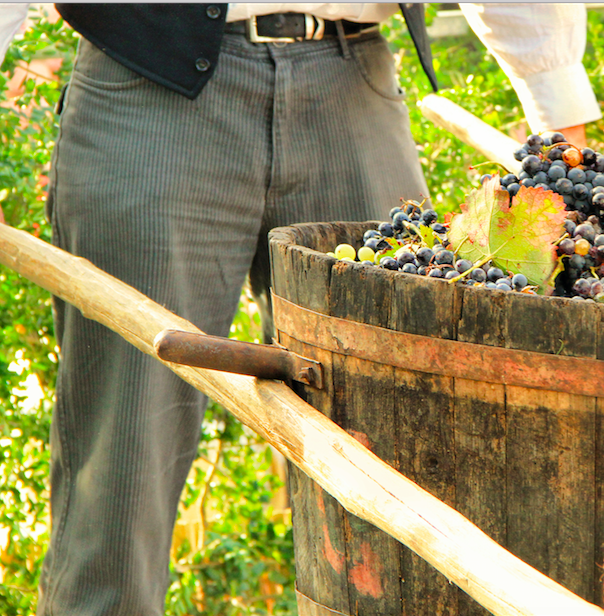
What would be the ideal weather conditions between now and the harvest?
FD: What we would like to see now is good, warm, dry weather with one or two small showers to ensure a good ripening.
POC: Dry, dry, dry … and hot, hot, hot!
GL: Sunny and dry with a shower or two in mid-September.
CVL: Sunny and dry until early October – a Californian-style Indian summer!
Partner Content
RA: Warm with no rain please!
JCM: Sunny days with a significant gap between afternoon and night-time temperatures. Some rain, but only when we want it, only when we need it and in exactly the right quantities (LOL)! Quite simply, we hope to get some luck!
SBR: Sunny, dry, hot in the days (but not excessively so) and cooler at night.
HL: Sunny, warm or hot during the day, cool at night and with no rain.
If things go well, how good a vintage could this be in your view?
FD: We can still produce a very nice vintage because it is now that the full ripening is taking place. The accumulation, modification and balancing of elements by photosynthesis such as tannins, sugars and acidity are what makes a great vintage … all of this is still to be determined; there is much at stake.
POC: We may well be heading for a vintage that is pretty, fresh, delicate and refined … something of a change from (recent) vintages that have tended to be dry and sunny, dense and powerful … that could be good news!
GL & CVL: It’s still much too early to figure out what will be the quality of the vintage. It all rests on the actual weather conditions until the grapes are picked. We imagine, if things turn out well, something a little like 2014.
RA: We should make a pretty decent and interesting wine. The weather forecast looks pretty good for the next couple of weeks at least. But 2021 won’t go down in the annals of the great vintages, that’s for sure. If we get a lot of sunshine and warm days all the way through to the end of September, the wine should be of an excellent quality, the little we end up with that is. It will be less opulent, less concentrated and less alcoholic – not necessarily a bad thing. Indeed, it’s possibly exactly what the market and consumers might want. It’s somewhat refreshing to drink lighter styled Bordeaux, and other wines. After all, concentration and extraction are not something we prioritise. I’m really looking forward to making the wine with what we have. Our terroir will still shine.
JCM: This could be a little like 2001 or 2008. Remember 2008: at the end of August we were asking ourselves whether we were going to be able to make any wine at all that year!
SBR: We never know as long as the fruit is still on the vines; but we can anticipate a blend with a little more Cabernet Franc. That means more elegance, more crispness, with red berry flavours. A beautiful Angélus in other words!
HL: It can be very good, if maybe not exceptional.
If things go badly, how bad a vintage could this be in your view?
FD: Our way of working with precision means that everything will be done to produce a good, if not perhaps exceptional, vintage if the weather conditions deteriorate. Sorting is a fundamental element that my parents did not have. The 1960s and 1970s were difficult vintages because of the lack of green harvesting in the vineyard, the absence of sorting and the lack of knowledge of the ripening process, especially the tannins in the skin and pips, the accumulation of anthocyans and so forth … Then we only took into account the 45 days from véraison to maturity. Look at 2007 – wines with beautiful quality considering the very demanding vineyard conditions; 30 years ago that would not have been possible.
POC: If the conditions are bad – wet and cold – achieving maturity will be very difficult. That could produce a thin and vegetal vintage in the worst of cases.
RA: If things go badly, and there is cloud and rain for the next couple of weeks, and throughout September, the wines might end up thin and green. But I think we’ll still make a nice wine. As ever, we will try to offer fabulous value for money.
JCM: In that case we would be looking at something like 2002 or 2006; but it won’t happen.
SBR: We’ll stay optimistic and keep working hard in order never to discover how bad it could have been.
HL: It is impossible to say. The ripeness is less an issue now than it was in the past; but botrytis can ruin a vintage if it rains too much in September. It can happen every year but it’s less and less the case. Hail is also a risk … who knows?
Have the challenges of the vintage been worse on certain types of terroir and for certain varietals?
FD: Today all the terroirs and grape varieties still have a chance. However, Merlot will have a lower yield because it is more sensitive to mildew.
POC: Merlot is by far the most susceptible Bordeaux varietal to mildew and, as a consequence, it is for it that the mildew threat has been greatest … The opposite is true for maturity … it is the Cabernets that remain the most difficult to ripen in a wet and cold year! So they are therefore the ones that will be most difficult to manage in the weeks to come.
GL: For frost, the western vineyards were more affected; for mildew, Merlot and the later-ripening plots were more impacted.
CVL: On the Margaux plateau (at Ferrière) there was a lot less mildew damage than in Soussans (at La Gurgue). The level of the water table also had a big influence this year. The older the vines the lower the table water. And the lower the water table, the less the mildew impact and the earlier the véraison. At Haut-Bages Libéral, the second wine’s Merlot plots were much more affected by mildew than those destined for the first wine.
RA: Yes, Merlot has suffered more than other varietals; it always does for both mildew and frost. And we, of course, have 93% Merlot! The Cabernet Franc (5%) was very little damaged; and our Malbec (2%) was pretty much entirely unscathed!
JCM: Our clay and limestone terroir permits an optimal balance in the vineyard; as a terroir is like a climatic shock-absorber!
SBR: Yes. With high rainfall Merlot are more sensitive to mildew; and the Merlot planted on clay has been a bigger problem still. Cabernet Franc is much easier for this.
HL: When it rains a lot, good drainage makes all the difference. Merlot is typically more affected by downy mildew. But it is also a question of soil and vigour. Our vineyard, which is early-ripening, especially that part of it on the Tier-IV plateau, is advantaged in a late-ripening vintage like this. The difficulty is always to pick the grapes at their perfect maturity. Let’s hope that September will allow all of us to be able to wait until that moment.
Is there anything else that you would like to add?
FD: As long as our grapes are not in the vat, anything can happen, good or bad. The last 45 days are crucial, as they are for every vintage.
POC: Making wine always means leaving a lot of room in the bottle for the climatic conditions of the vintage itself … that is the magic of wine. The pleasure for the team is to be confronted with the different challenges that each different vintage presents. That is how the domaine’s portfolio becomes more complex and more diverse. This type of vintage is always difficult to live with for us winegrowers whilst the grapes remain on the vines … But once we bottle them and they acquire a little age, we find we have a special affection for them … like the 2004s, for example, which are quite superb today!
CVL & GL: This is a challenging vintage in which the grands terroirs will succeed more than the others.
JCM: The skill and dedication of the team who work each day in the vineyard is our best guarantee of quality, especially in difficult vintages like this. We need to recognise and talk more about that very human savoir faire and about the skill and dedication of those working in our vineyards every day.
Related news
Should Rioja increase its focus on white wine?
The 'family spirit' behind Champagne Gardet's 130th anniversary


